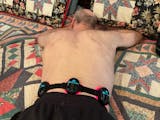The Benefits of Photobiomodulation Therapy for Chronic Non-Specific Low Back Pain
Photobiomodulation therapy (PBM) has emerged as an effective treatment for musculoskeletal disorders, specifically chronic non-specific low back pain (NSCLBP). This therapy is renowned for its beneficial impact on biomarkers such as creatine kinase (CK) and serum cortisol levels, which are commonly associated with stress caused by physical exercise or chronic pain. The integration of PBM with aquatic exercises, such as deep water running (DWR), holds great potential in reducing pain and enhancing physical function.
Understanding Photobiomodulation Therapy
PBM, also referred to as red light therapy, utilizes distinct light wavelengths to penetrate tissues and enhance cellular activity. This technique has the potential to decrease inflammation, support tissue healing, and regulate pain. Individuals with NSCLBP can benefit from PBM as a non-invasive, medication-free approach to pain management and enhancing mobility.
Study Insights on PBM and Aquatic Exercise
A recent study evaluated the effects of combining PBM with DWR on pain intensity, disability, physical performance, and biomarkers like cortisol and CK in individuals with NSCLBP. Participants were divided into three groups:
- TGPBM: Photobiomodulation and Training Group
- TGPLA: Placebo Photobiomodulation and Training Group
- GPBM: Photobiomodulation Group
Key Findings
- Pain Intensity and Disability: The TGPBM and GPBM groups both exhibited noteworthy decreases in pain intensity and disability. This underscores the potential of PBM in alleviating chronic pain and enhancing daily functionality.
- Cortisol Levels: There was a significant alteration observed in the cortisol levels. The TGPBM group witnessed a rise, while the GPBM group observed a decline. This indicates that the amalgamation of PBM with physical training might have a distinct impact on stress biomarkers compared to PBM alone.
- Physical Performance:Enhancements in the 6-minute walk test adaptation (6WTA) were noted, however, the alterations did not reach a level of significance to be considered a primary result.
The Role of Prungo Red Light Therapy Module
At Prungo, we are committed to advancing the field of red light therapy with our innovative Prungo Red Light Therapy Module. Our portable red light therapy products are designed to provide effective pain relief and enhance recovery for users suffering from conditions like NSCLBP.
Advantages of Prungo Red Light Therapy Module
- Non-Invasive: Offers a safe, non-invasive alternative to traditional pain management methods.
- Portable: Lightweight and easy to use, making it convenient for daily therapy sessions at home or on the go.
- Targeted Therapy: The focused beam angle ensures precise application, maximizing therapeutic benefits.
Conclusion
Prungo is committed to delivering exceptional portable red light therapy devices that assist users in attaining improved health and wellness outcomes. Photobiomodulation therapy, particularly when paired with physical exercises such as deep water running, presents notable advantages for individuals experiencing chronic non-specific low back pain. The alleviation of pain intensity and disability, coupled with the regulation of stress biomarkers, highlights the potential of PBM as an influential therapeutic instrument.
















Share:
Unveiling the Therapeutic Potential of Laser Therapy for Rheumatoid Arthritis: A Comprehensive Review
The Efficacy of Low-Level Laser Therapy in Treating Sports Injuries